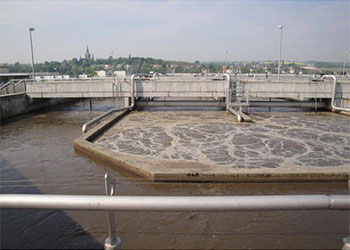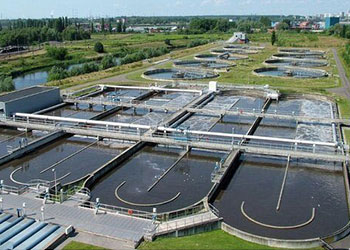
WELCOME
GJ WATER TECHNOLOGIES
- Technical Specification
- Gallery
- Quick Inquiry
- Wastewater Treatment Plant Chennai
- WTP Plant in Chennai
- Effluent Treatment Plant Consultant
- ETP Plant Consultant
- Sewage Treatment Plant Consultant
- STP Plant Consultant
- Industrial RO Plant
- SS RO Plant
- Iron Removal Water Plant
- Mineral Water Plant
- Waste Water Recycling Plant Construction
The cost of setting up a Sewage Treatment Plant (STP) can vary significantly depending on various factors such as capacity, technology, location, and regulatory requirements. STP plants are essential for treating wastewater and ensuring environmental sustainability, making them a crucial investment for municipalities, industries, and institutions.
However, larger STP plants with capacities exceeding one million LPD can cost several million dollars or more. These costs typically include expenses for land acquisition, construction, equipment, labor, and ongoing operational and maintenance costs.
The choice of technology also plays a pivotal role in determining the overall cost. Conventional activated sludge processes may be more economical for smaller plants, while advanced technologies like membrane bioreactors or sequencing batch reactors can be more expensive but offer higher treatment efficiencies and smaller footprints.
Additionally, location-specific factors such as land prices, availability of skilled labor, and proximity to water bodies can significantly influence the STP plant cost. Compliance with local environmental regulations and the need for specialized treatments can also add to the expenses.
In summary, the cost of setting up an STP plant varies widely and depends on factors like capacity, technology, location, and regulatory compliance. It is crucial for project planners to conduct a thorough feasibility study and cost analysis to determine the precise investment required for their specific needs and circumstances.
What is MBBR STP?
STP refers to a sewage treatment plant designed to process wastewater generated from both residential and industrial sources. This wastewater undergoes treatment through a multi-stage system known as STP, which has evolved significantly over time, with MBBR being one of the latest advancements.
MBBR presents a cost-effective solution for wastewater treatment plants in regions where environmental regulations are less stringent. It employs biological treatment methods, facilitating both nitrification and denitrification within the tanks. Nitrification involves the transformation of ammonium into nitrate, while denitrification occurs as oxygen is metabolized, converting nitrate into nitrogen.
What is MBBR and How does it function?
MBBR (Moving Bed Biofilm Reactor) is a biological method that utilizes microorganisms or nematodes to break down organic waste present in the water. These microorganisms consume the waste and produce simpler substances that can be easily removed in subsequent treatment stages. Biological wastewater treatment is highly effective and can be implemented as a standalone solution or as part of a larger process. The system includes an activated sludge process, an aeration mechanism, and a biofilm process. Sludge accumulates on plastic carriers, and an increased surface area allows for enhanced air, water, and bacterial interaction, thereby accelerating the treatment process.
Components utilized in the MBBR wastewater treatment process include:
Basin: An aeration tank is equipped with thousands of polyethylene media that serve as a substrate for the growth of microorganisms. The dimensions of the tank and the number of plants are determined by the volume of water treated daily. Typically, two tanks are employed to facilitate the complete aeration process. The MBBR media are designed in round or wheel shapes, with a density that is compatible with water, allowing them to neither sink nor float.
Media: The MBBR tanks are filled with thousands of small, circular polyethylene chips, which occupy approximately 60–70% of the tank's volume. These chips provide a substantial surface area for biofilm development.
Aeration Grid: This component facilitates the effective movement of media throughout the tank and introduces air into the water, creating bubbles that promote proper mixing. Air is delivered through a blower, which pushes it through a pipeline to the diffusers.
Sieve: This element prevents the MBBR media from exiting the tank.
MBBR Sewage Treatment Plant
The Moving Bed Biofilm Reactor (MBBR) sewage treatment plant represents a straightforward and dependable approach to wastewater treatment. Its operational simplicity and ease of management make it superior to traditional methods. The MBBR system employs a collection of polyethylene biofilm carriers that move freely within the aerated basin containing wastewater. Each carrier provides an effective surface area for both autotrophic and heterotrophic bacteria, making this system advantageous for supporting a high-density bacterial population. The MBBR system guarantees a high level of reliability and operational ease.
Our MBBR sewage treatment plant is designed to effectively eliminate physical, chemical, and biological contaminants from wastewater generated by kitchens, restrooms, or industrial facilities. We provide a top-tier solution that is cost-effective, user-friendly, and versatile. Whether you opt for MBBR sewage treatment or an underground sewage treatment plant, installation is straightforward and can be accomplished in compact spaces. This system is particularly suitable for small to medium-scale applications due to its reduced installation, operational, and maintenance expenses. Choose Cleantech Water for a premium MBBR sewage treatment plant and benefit from reliable, low-maintenance services.
MBBR harnesses the combined advantages of various biological processes, incorporating both an activated sludge process and biofilm media. While capitalizing on the benefits of these biological methods, MBBR adeptly addresses the challenges associated with wastewater treatment.
This technique employs plastic carriers that are coated with biofilm to facilitate the breakdown of waste. In addition to effectively removing organic materials, MBBR has demonstrated its capability in supporting nitrification and denitrification processes. The MBBR wastewater treatment procedure consists of several stages, allowing for customization to meet specific purification needs.
Process of MBBR Sewage Treatment Plant
The operation of the MBBR Sewage Treatment Plant involves several key components, including the basin, media, aeration grid, and sieve, which facilitate the various phases of wastewater treatment.
The basin, referred to as the reactor, is the primary site for the MBBR process. Its dimensions are determined by the filtration requirements of the plant. The basin is open at the top, allowing air to interact with the water, which characterizes the MBBR process as an aerobic filtration method. Wastewater, or influent, enters the basin for treatment and may subsequently be directed to another basin for further MBBR processing or alternative treatment methods.
Inside the basin, there are media or carriers, which are small plastic chips designed to mimic the density of water, enabling them to disperse throughout the fluid. The aeration grid, located at the bottom of the basin, consists of a fan that promotes the effective movement of the media. This continuous motion ensures that the carriers engage with the waste present in the tank, facilitating its decomposition and enhancing oxygen levels within the vessel.
The sieve is another crucial element in the MBBR Sewage Treatment Plant. Its mesh-like design permits water to pass through while preventing the plastic carriers from escaping the basin. Microorganisms residing on the media consume the waste in the water, thereby purifying it for potential reuse or safe disposal. The specific types of microorganisms introduced into the water are contingent upon the nature of the waste that the plant is tasked with treating.
The comprehensive methodology, effectiveness, and creativity inherent in the development and operation of MBBR technology render it highly suitable for wastewater treatment.
Benefits of MBBR in Sewage Treatment
MBBR sewage treatment facilities are increasingly recognized for their innovative architecture and outstanding performance. They offer numerous advantages, making them a favored option for both municipal and industrial wastewater management.
Exceptional Efficiency and Space-Saving Design
A key advantage of MBBR sewage treatment plants is their remarkable efficiency in eliminating organic contaminants and nutrients such as nitrogen and phosphorus. The distinctive biofilm-based approach facilitates a superior degradation rate when compared to traditional systems. Furthermore, the compact nature of MBBR systems allows for installation in areas with limited space. Property owners and businesses in urban or industrial settings can implement these plants without the need for extensive land or infrastructure.
Reduced Energy Consumption
MBBR technology enhances energy efficiency through its advanced aeration system and optimized processes. In contrast to conventional sewage treatment facilities that require substantial energy to sustain microbial activity, MBBR systems are engineered to reduce power usage. This results in decreased operational expenses, offering a significant benefit for organizations aiming to control costs while adhering to environmental regulations.
Scalability and Adaptability to Various Loads
A notable characteristic of MBBR sewage treatment plants is their scalability. The system can effectively accommodate varying loads, making it suitable for properties or industries that experience seasonal or inconsistent wastewater production. It is easy to increase the amount of carrier media or expand the reactor's capacity, ensuring the system remains efficient as treatment needs evolve.
Whether processing sewage from a small residential complex or handling effluent from a large industrial facility, MBBR systems can adjust to fulfill the specific requirements of property owners or businesses.
Applications of MBBR Technology
The adaptability of MBBR technology allows for its use across multiple sectors, delivering effective wastewater management solutions in both municipal and industrial environments.
Municipal Sewage Treatment
Urban municipalities are increasingly challenged by the management of wastewater due to rising populations and inadequate infrastructure. Moving Bed Biofilm Reactor (MBBR) sewage treatment facilities present an effective solution for processing substantial amounts of sewage in highly populated regions. Their compact structure and superior treatment efficiency facilitate adherence to stringent environmental standards while maximizing land utilization.
The effluent treated by MBBR systems can be safely released into natural water bodies or repurposed for non-potable applications such as irrigation, landscaping, or industrial cooling. This approach represents a sustainable alternative for urban areas.
Industrial Wastewater Treatment
Industries produce wastewater with diverse pollutant compositions, necessitating robust and flexible treatment solutions. MBBR technology proves to be highly efficient in managing effluents from sectors such as food processing, textiles, pharmaceuticals, and chemical production.
The system's capability to address complex pollutants, along with its scalability, positions it as a dependable option for industries aiming for effective long-term wastewater management. Companies can achieve regulatory compliance while also promoting environmental sustainability.
Upgrading Existing Facilities for Increased Capacity
For sewage water treatment plants facing challenges related to overcapacity or outdated systems, MBBR technology presents an effective retrofitting solution. By incorporating MBBR components into the current infrastructure, treatment capacity can be improved without the need for a total renovation.
This approach provides a cost-effective alternative for property owners and industries looking to enhance their wastewater treatment capabilities while reducing both downtime and capital investment.
#stpplantcostinchennai
#stpplantcostinindia
#stpplantcostintrichy
#stpplantcostinmadurai
#stpplantcostintadasricity
#stpplantcostinandhra
#stpplantcostinnellore
#stpplantcostinguntur
#stpplantcostinsalem
#stpplantcostinpondicherry
#stpplantcostinkerala
#stpplantcostincoimbatore
#stpplantcostinbangalore
#stpplantcostinhyderabad
#stpplantcostinkarnataka
#stpplantcostinthoothukudi
#stpplantcostincochin
#stpplantcostinvellore
Gallery



